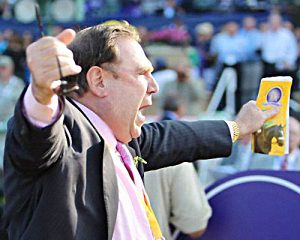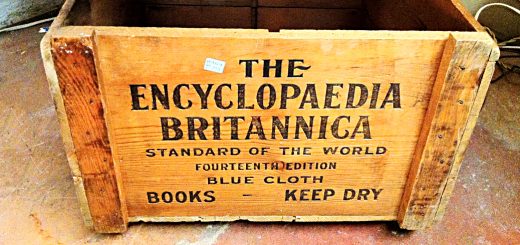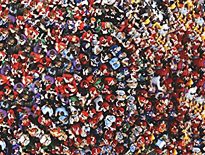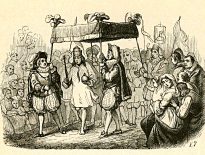Marty Schwartz – Champion Trader

Today’s post is a profile of Guru investor Marty Schwartz, who appears in Jack Schwager’s original Market Wizards. His chapter is called Champion Trader.
Contents
Marty Schwartz
Marty Schwartz became a successful trader when he changed his system after a decade of losses.
- He now trades from home, with no employees.
Schwartz appears in Jack Schwager’s original Market Wizards.
- His chapter is called Champion Trader.
Early days
Marty Schwartz grew up in a poorish family but won a scholarship to Amherst College.
He went to Columbia Business School but dropped out to join the Marine Corps reserves as an officer candidate.
- He was the only reserve at the office school, which meant that he avoided being sent to Vietnam.
The two experiences convinced me that I could do almost anything if I worked hard enough and provided the groundwork for my successful trading.
After the Marines he went back to Columbia and finished his MBA.
Schwartz then spent a decade losing money before he became successful, supporting his trading by working as an analyst.
In his second job, another analyst leaked one of Schwartz’s reports, and he was forced to testify in front of the NYSE.
- He was exonerated of insider trading, but he lost his drive.
Bear market
By 1973, Schwartz was getting into TA, and the market advance/decline line had topped out.
- The growth stocks he covered were selling at PEs of 40 to 50, but he was discouraged from writing the bearish reports that he wanted to.
Schwartz lost his job when the bear market came, and then his saved capital which he invested with a commodities trader who was using moving averages.
- When he tried to get back to work, he found that the insider trading scandal had hurt his reputation.
A friend got him back in, and he moved from job to job, growing tired of the sales trips.
- He wanted to work for himself, and persuaded EF Hutton to let him have a quote machine.
He talked to his friend Bob Zoellner (later, a successful hedge fund manager) about how to analyze market action.
- He took subscriptions to lots of market newsletters in order to synthesise his own system.
Trading championships
Schwartz is well-known for his performance in the U.S. Trading Championships (as is Mark Minervini).
- In nine of the ten short championships he entered, he made more money than all the other contestants combined.
His average return was 210% (over four months).
- He only entered the year-long contest once, making 781%!
Performance
Schwartz has recorded large gains each year since he turned professional in 1979, with a maximum monthly drawdown of 3%.
My philosophy has always been to try to be profitable every single month. I even try to be profitable every single day.
I took $40,000 and ran it up to about $20 million with never more than a 3% drawdown.
Technical analysis
Schwartz eventually switched from fundamental to technical analysis, and started to make money.
I developed and synthesized a number of indicators that I used to determine when the market was at a lower-risk entry point.
Although occasionally there are situations where the market goes three standard deviations instead of two, based on the likelihood that 98 percent of the moves will stop at two standard deviations, I’ll take that bet any day of the week.
And, if I am wrong, I am going to use risk control and stop myself out X dollars away. That is the most critical element.
It sounds like Schwartz was using something similar to Bollinger Bands.
By mid-1979, I had run $5,000 up to $140,000 in just two years.
Before, admitting I was wrong was more upsetting than losing the money. When I became a winner, I said, “I figured it out, but if I’m wrong, I’m getting the hell out, because I want to save my money and go on to the next trade.”
Out on his own
My wife said to me, “Go out on your own. You’re thirty-four and you’ve always wanted to work for yourself. The worst that can happen is that you ‘ll go back to doing what you were doing before.”
$30,000 was tied up in tax deals and $92,500 was used to pay for a seat on the American Stock Exchange. That left me with about $20,000 when I went on the floor as a market maker. I borrowed $50,000 from my in-laws, which gave me $70,000.
After the first four months, I was ahead by $100,000. The next year I earned $600,000. After 1981, I never earned less than seven figures.
After a few years, he left the floor.
I could see much more sitting at the desk, looking at a machine, than being at a post, trading an option.
Another reason was that, in 1981, a change in the tax laws made it more lucrative to trade futures than stocks and options.
1987 crash
I came in long. Because on October 16, the market fell 108 points, which, at the time, was the biggest one-day point decline in the history of the stock exchange. It looked climactic to me, and I thought that was a buying opportunity.
The high in the S&P on Monday was 269. I liquidated my long position at 267. I lost $315,000. One of the most suicidal tilings you can do in trading is to keep adding to a losing position. I could have lost $5 million that day.
My Marine training came into play. They teach you never to freeze when you are under attack – either go forward or backward. Don’t just sit there. It is the same thing in the market. The most important thing is to keep enough powder to make your comeback.
I did real well after October 19. In fact, 1987 was my most profitable year.
Losing
I’ve always had my biggest setbacks after my biggest victories. I [get]careless.
Whenever you get hit, you are very upset emotionally. Most traders try to make it back immediately; they try to play bigger. Whenever you try to get all your losses back at once, you are most often doomed to fail. That is true in everything–investments, trading, gambling.
WAfter a devastating loss, I always play very small and try to get black ink, black ink. I shrink my size totally–to a fifth or a tenth of the position that I trade normally. And it works.
Trading rules
- I always check my charts and the moving averages prior to taking a position. Is the price above or below the moving average? I try not to go against the moving averages.
- Has a stock held above its most recent low, when the market has penetrated its most recent low? If so, that stock is much healthier than the market. Those are the types of divergences I always look for.
- Before putting on a position always ask, “Do I really want to have this position?”
- Learn to take losses. The most important thing in making money is not letting your losses get out of hand. I always take my losses quickly. That is probably the key to my success. You can always put the trade back on, but if you go flat, you see things differently.
- Don’t increase your position size until you have doubled or tripled your capital. Most people make the mistake of increasing their bets as soon as they start making money. That is a quick way to get wiped out.
- After a successful period, take a day off as a reward. I’ve found it difficult to sustain excellent trading for more than two weeks at a time.
- After a strong run of profits, I try to play smaller rather than larger. My biggest losses have always followed my largest profits.
- Bottom fishing is one of the most expensive forms of gambling. It’s OK to break this rule on occasion if you have sufficient justification.
- Before taking a position, always know the amount you are willing to lose. Know your “uncle point” and honor it.
- When T-bonds and T-bills differ in respect to their individual relationship between price and the moving average – one above the moving average, the other below – have no position until one confirms the direction of the other.
- The most important thing is money management, money management, money management. Anybody who is successful will tell you the same thing.
- The one area that I am constantly trying to improve on is to let my gains run. I’m not able to do that well. I’m always working on it. I just love to take profits.
- If you’re ever very nervous about a position overnight, and especially over a weekend, and you’re able to get out at a much better price than you thought possible when the market trades, you’re usually better off staying with the position. When your worst fears aren’t realized, you probably should increase your position.
Conclusions
This is a lively chapter about a passionate man.
For a long time, I thought that we weren’t going to get any details on how Schwartz made his money, but the list of trading rules at the end is pretty good.
As Schwager points out, Schwartz’s story will provide encouragement to those who are not overnight successes.
- He lost money for a decade, only winning when he completely abandoned his initial system by switching to TA.
Schwager says that:
The key lesson is that each trader must find his or her own best approach. He became successful when his desire to win took precedence over his desire to be right.
Risk control is also key for Schwartz.
We didn’t learn exactly which TA rules helped Marty to his fortune, but we learned a lot about his winning mentality.
- Until next time.

